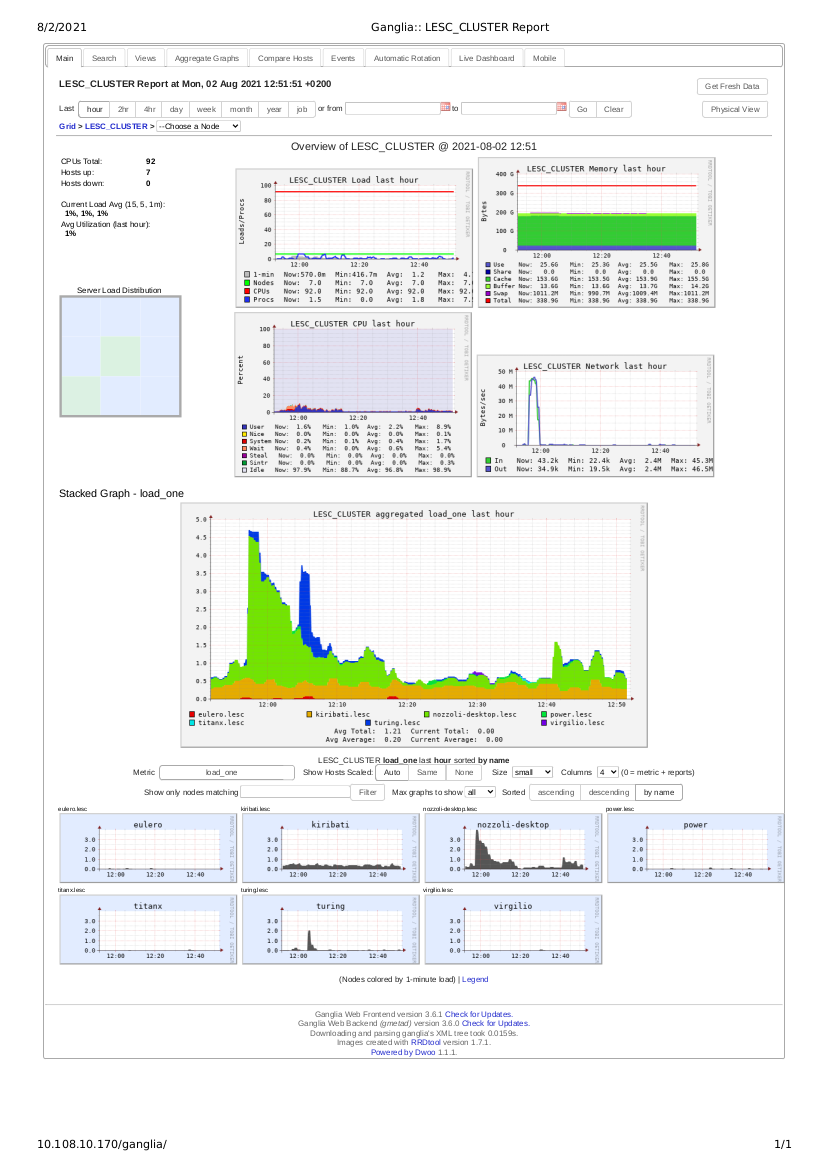Ganglia is a scalable, distributed monitoring tool for high-performance computing systems, clusters and networks. The software is used to view either live or recorded statistics covering metrics such as CPU load averages or network utilization for many nodes.
Ganglia software is bundled with enterprise-level Linux distributions such as Red Hat Enterprise Level (RHEL) or the CentOS repackaging of the same. Ganglia grew out of requirements for monitoring systems by Berkeley (University of California) but now sees use by commercial and educational organisations such as Cray, MIT, NASA and Twitter.
It is based on a hierarchical design targeted at federations of clusters. It relies on a multicast-based listen/announce protocol to monitor state within clusters and uses a tree of point-to-point connections amongst representative cluster nodes to federate clusters and aggregate their state. It leverages widely used technologies such as XML for data representation, XDR for compact, portable data transport, and RRDtool for data storage and visualization. It uses carefully engineered data structures and algorithms to achieve very low per-node overheads and high concurrency. The implementation is robust, has been ported to an extensive set of operating systems and processor architectures, and is currently in use on over 500 clusters around the world. It has been used to link clusters across university campuses and around the world and can scale to handle clusters with 2000 nodes.[1]
The ganglia system comprises two unique daemons, a PHP-based web front-end, and a few other small utility programs.
Ganglia Monitoring Daemon (gmond)
Ganglia Meta Daemon (gmetad)
Ganglia PHP Web Front-end
LESC Ganglia is available at: http://10.108.10.170/ganglia/?c=LESC_CLUSTER
